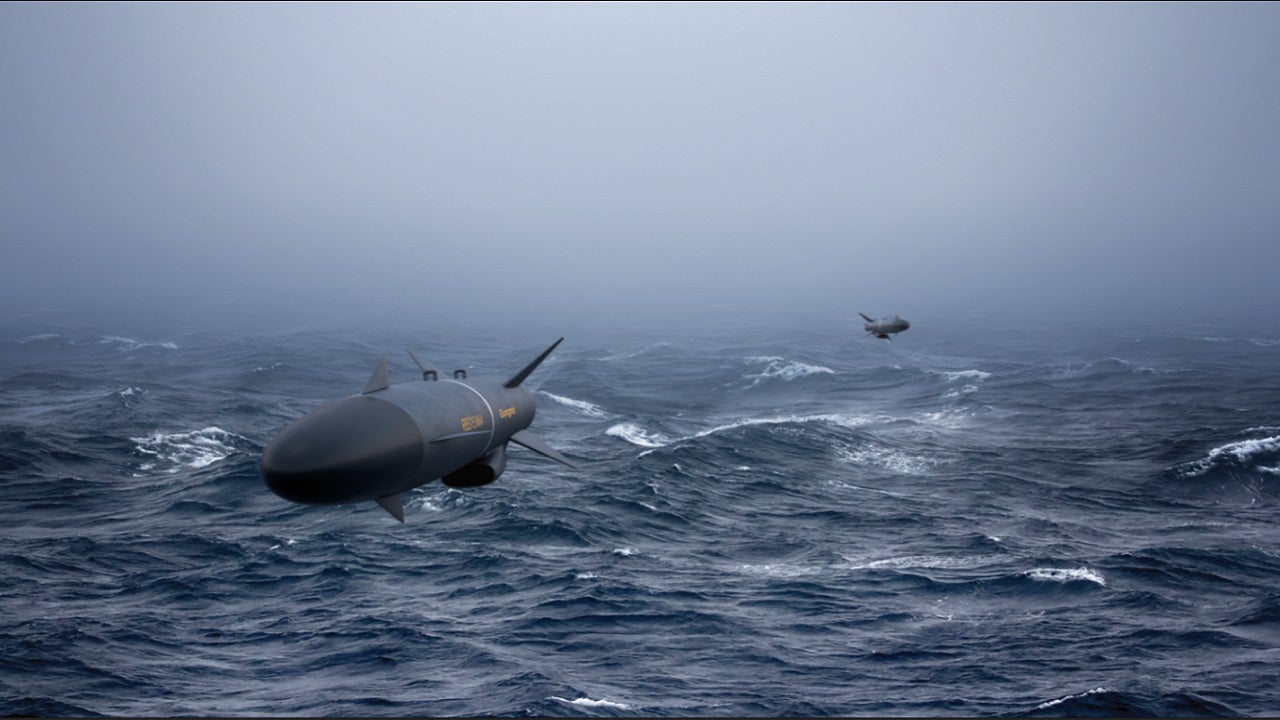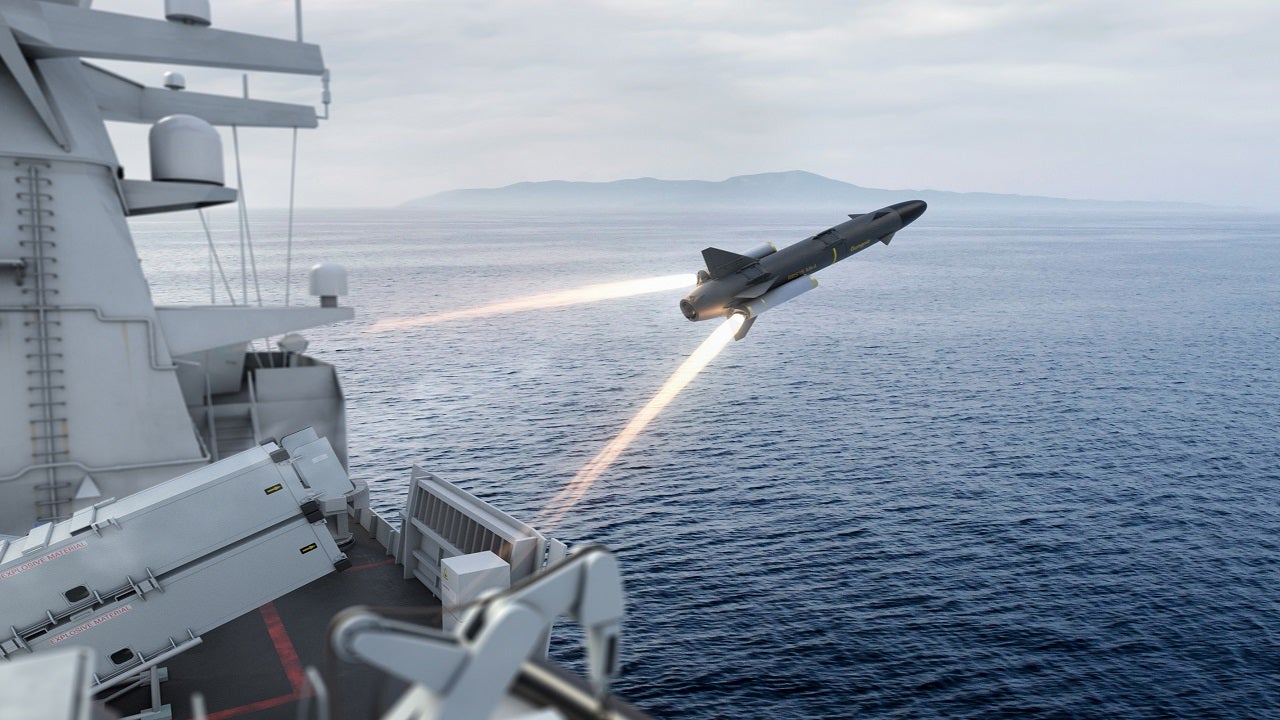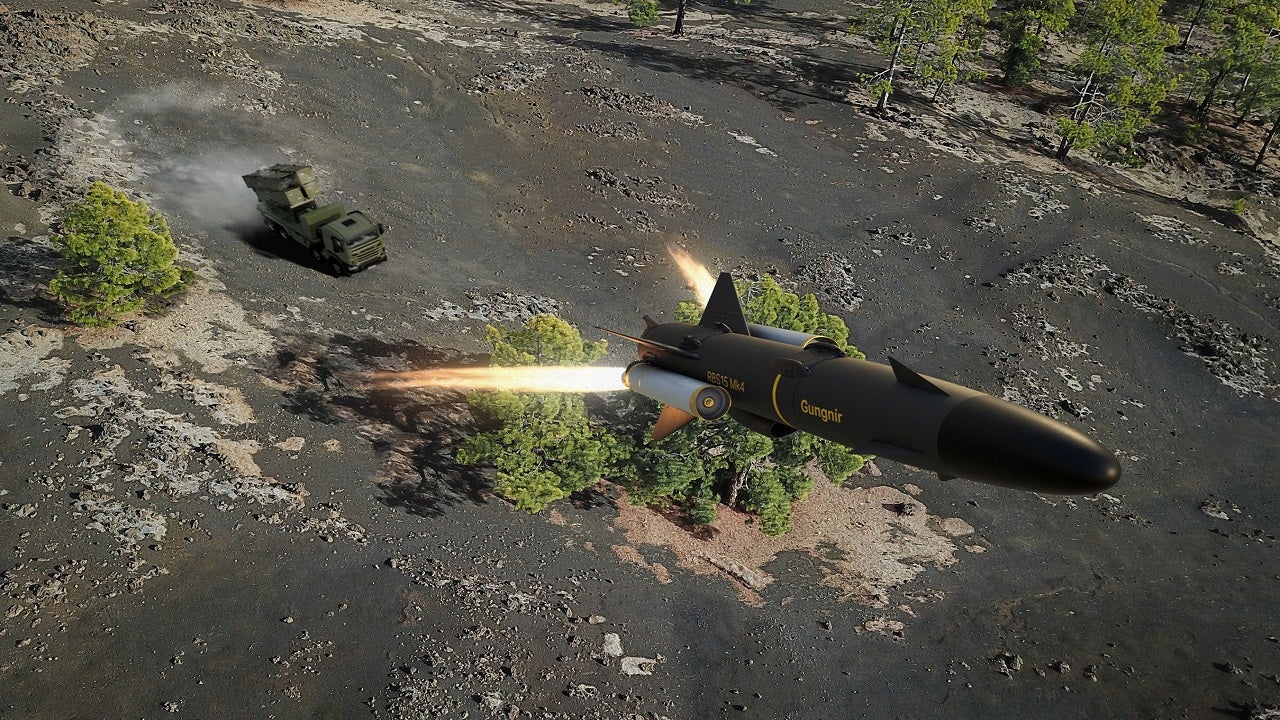RBS 15 Gungnir is the next-generation missile in the RBS 15 family of anti-ship missile systems offered by Saab Group.
Gungnir is the system level designation, whereas the air-launched configuration is called the RBS15 Mk4. It is manufactured by Saab in collaboration with German company Diehl Defence. The term Gungnir refers to the spear of Norse god Odin in the Scandinavian mythology.
The missile is designed to dominate the littoral environment and offer a long-lasting and adaptable solution to address the future defence needs of naval, land, and air forces across the world.
The RBS 15 Gungnir was officially showcased for the first time at the Farnborough International Airshow 2018 held in Farnborough, UK, in July 2018.
The Swedish Defence Material Administration (FMV) placed a $358.5m order with Saab for the development of RBS 15 Mk4 missiles in March 2017. The missiles will be deployed on board the Visby-class corvettes of the Royal Swedish Navy and JAS Gripen E multi-role fighters of the Swedish Air Force. Diehl Defence placed an order with Saab for the RBS15 Mk3 anti-ship missile systems worth $18m in August 2018. Deliveries will take place between 2019 and 2024.
In September 2020, Saab was contracted by Diehl Defence to supply RBS15 anti-ship missiles worth $194m to the German Navy. Deliveries are scheduled between 2022 and 2026.
RBS 15 Gungnir variants
The versatile capabilities of RBS 15 Gungnir missile solution enable the operators to use it in three different configurations, which include an air-launched, ship-launched, and land-based configuration.
The aerial variant of Gungnir is designated as RBS 15 Gungnir Air System. In the air-launched configuration, RBS 15 Mk4 air missiles can be propelled from the Saab Gripen multi-role fighter aircraft. The air system can also be integrated with other similar aircraft.
In the ship-launched configuration, the Mk4 missiles are launched from the deck of a naval vessel. It is compatible with the ships of various sizes and shapes.
The RBS 15 Gungnir Land System is the most scalable version among the three variants. It can be integrated with a command network.
The next generation of the RBS15 system is called RBS15 Gungnir by Saab and is now being introduced to the market as a complete air, sea, and land-based vehicle missile system solution.
The RBS15 missile family is in service with multiple navies, coastal batteries, and air forces from Sweden, Finland, Germany, Poland, Croatia, Thailand, and an undisclosed country.
RBS 15 Gungnir anti-ship missile system design and features
The RBS 15 Mk4 anti-ship missile features a long circular-shaped fuselage, which tapers towards the front end to form a cone-shaped nose section.
The airframe of the missile is made of composite materials and has mounts to enable its installation on aircraft. The composite structure offers optimal defence penetration and protection against electronic threats.
Gungnir can be seamlessly integrated into the existing infrastructure of forces such as trucks, aircraft, and ships.
The anti-ship missile has a length of 4.35m and a wingspan of 1.40m. The overall diameter of its circular fuselage is 0.50m. Its in-flight weight is approximately 650kg while weight with boosters is 810kg.
The flexible RBS15 launcher unit system is built on an ISO standard 20ft container footprint. It includes the main components and systems necessary to enable the launch of the RBS15 missile.
The structure incorporates up to four missiles per container and can be loaded on to any military or civilian vehicle capable of carrying ISO standard containers.
RBS 15 Gungnir missile guidance and navigation
The J-band active radar target seeker on board the Gungnir is integrated with a highly accurate inertial navigation system (INS). The state-of-the-art target seeker offers all-weather operational capability. It provides a greater degree of precision while discriminating targets and engaging them even in the most adverse conditions.
A new data link installed in the missile system enables the operators to retarget the missile during the flight. The missile is also equipped with an anti-jam global positioning system (GPS) and other advanced autonomous technologies that enhance its survivability.
The missile will independently identify and engage targets, without depending on global satellite navigation systems or data links.
Warhead and propulsion of Gungnir anti-ship missile
The warhead placed in the middle of the missile weighs approximately 200kg. The highly destructive warhead can destroy any kind of vessel.
The missile is powered by a turbojet engine, while the land and sea configurations of the RBS 15 Mk4 are also attached with two booster motors for a high amount of thrust in the initial boost phase.
The propulsion system enables the missile to travel at a high subsonic speed of 0.9 Mach. The range of the missile is more than 300km, which is greater than that of other missiles in the RBS 15 family.










